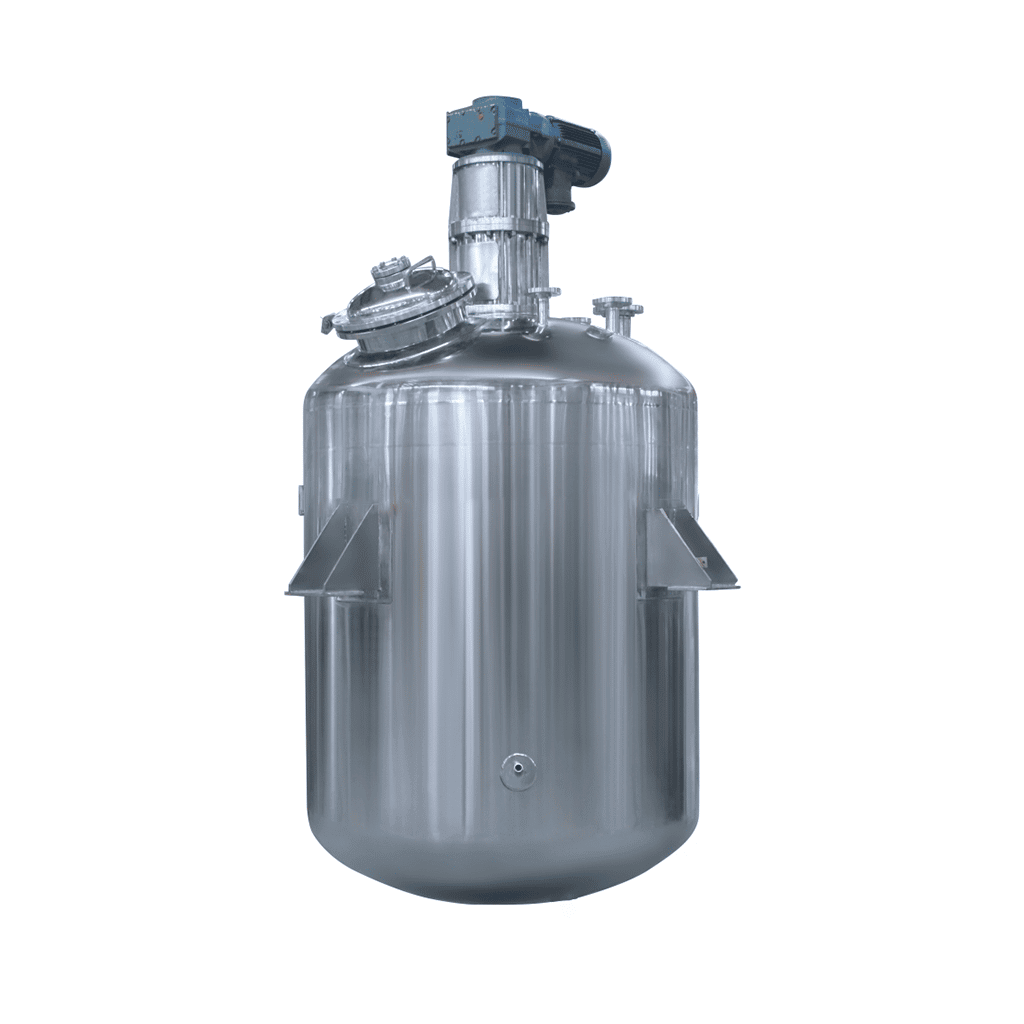
-24-1.jpg)
Stainless Steel Reactor
Stainless Steel Reactor: used in dairy products, sugar, beverages, and other fields
Material
stainless steel (316, 304)
Capacity (L)
10-10000+
Mixing system
anchor, paddle, frame and others
Heating system
electric heating, oil heating and others
A stainless steel reactor is a stainless steel container equipment. The stainless steel reactor consists of a kettle body, a kettle lid, a stirrer, a jacket, a bracket, a transmission device, a shaft seal device, etc. Materials and openings can be made according to user needs and process requirements. Stainless steel reactors are mainly used for stirring, homogenizing, and mixing storage of dairy products, sugar, beverages, food, and various pharmaceuticals.
Request a quoteStainless steel reactor is a commonly used experimental equipment, mainly used to complete vulcanization, nitration, hydrogenation, alkylation, polymerization, condensation, and other processes. Stainless steel reactor also has the advantages of rapid heating, high temperature resistance, corrosion resistance, hygiene, and no environmental pollution It has certain applications in chemical, pharmaceutical, food, and other industries. How should the user operate the stainless steel reactor? Let me introduce the operation method of the stainless steel reactor in detail.

Application Scope of Stainless Steel Reactor
Stainless steel reactors are widely used in pressure vessels for reaction, evaporation, synthesis, polymerization, saponification, sulfonation, chlorination, nitration and other processes in chemical, food, paint, hot melt adhesive, silica gel, paint, medicine, and petrochemical production. , such as reactors, reaction kettles, decomposition kettles, polymerization kettles, etc. The reaction pot is mainly composed of four parts: the inner tank, the jacket, the stirring device and the support base (the thermal insulation structure can be adopted according to the process needs).
Features of stainless steel reactor
The inner tank body is made of stainless steel (SUS304, SUS316L or SUS321) and other materials according to the needs of the process. The inner surface is mirror polished, which can be cleaned by CIP online and sterilized by SIP, and meets the requirements of hygiene standards.
The jacket is made of stainless steel (SUS304) or carbon steel (Q235-B) according to the process requirements.Appropriate diameter-to-height ratio design, customized stirring device on demand; the stirring shaft seal adopts pressure-resistant sanitary mechanical seal device to maintain the working pressure in the tank and prevent unnecessary pollution and material loss caused by leakage of materials in the tank. The supporting type adopts the hanging lug type or the floor outrigger type according to the operation requirements.
Before starting the stainless steel reactor
1. Check whether the kettle, agitator, rotating parts, auxiliary equipment, indicating instruments, safety valves, pipelines and valves meet the safety requirements.
2. Check whether the water, electricity and gas meet the safety requirements.
After the stainless steel reactor is stopped
1. Stop stirring, cut off the power supply, and close various valves.
2. When shoveling the pot, the power supply of the mixer must be cut off, a warning sign must be hung, and a person should be set up to monitor it.
3. The stainless steel reaction kettle must undergo regular technical inspection according to the requirements of the pressure vessel. If the inspection fails, it is not allowed to run.
The stainless steel reactor is in operation
1. The agitator of the reaction kettle should be turned on before feeding. When there is no noise and it is normal, the material should be added to the reaction kettle, and the amount of feeding should not exceed the process requirements.
2. Before opening the steam valve, first open the return valve, and then open the intake valve. The steam valve should be opened slowly to preheat the jacket and gradually increase the pressure, and the pressure in the jacket should not exceed the specified value.
3. The steam valve and cooling valve cannot be activated at the same time, and hammering and collision are not allowed when the steam pipeline passes through the air.
4. When opening the cooling water valve, first open the return water valve, and then open the water inlet valve. The cooling water pressure shall not be lower than 0.1 MPa, nor higher than 0.2 MPa.
5. For the water ring vacuum pump, the pump should be turned on first, and then the water should be supplied. When the pump is stopped, the pump should be stopped first, and then the water should be stopped, and the accumulated water in the pump should be removed.
6. Check the operation of the reactor at any time, and if any abnormality is found, it should be stopped for maintenance.
7. When cleaning the titanium epoxy (enamel) reactor, it is not allowed to brush the reactor with alkaline water, and be careful not to damage the enamel.




